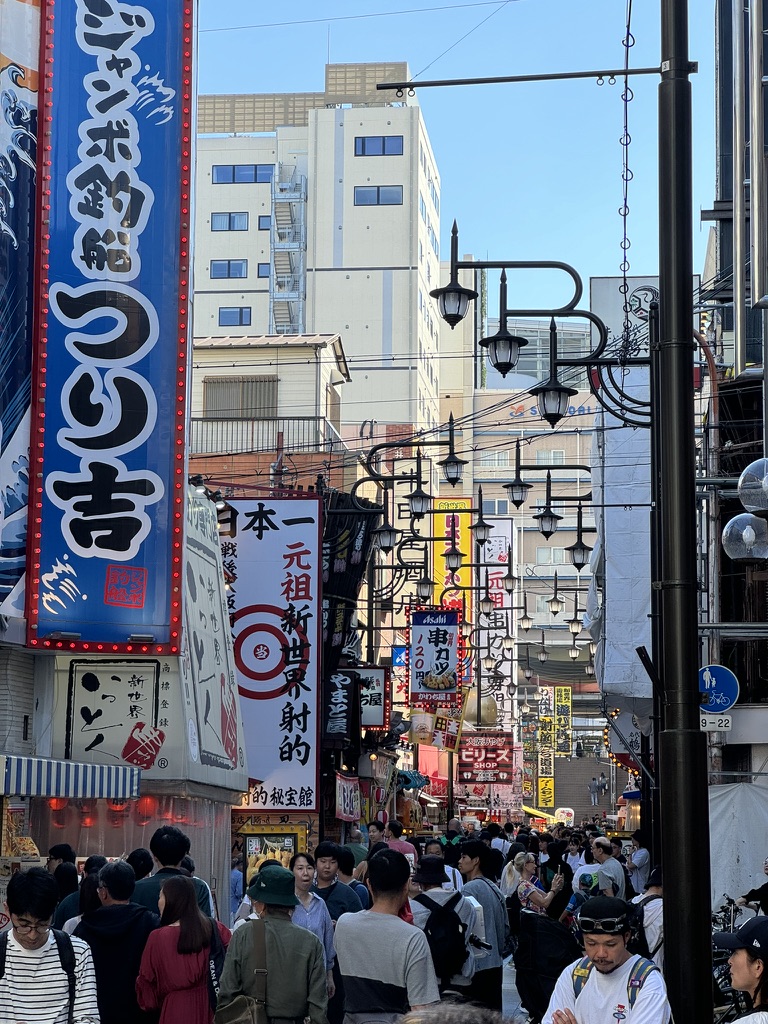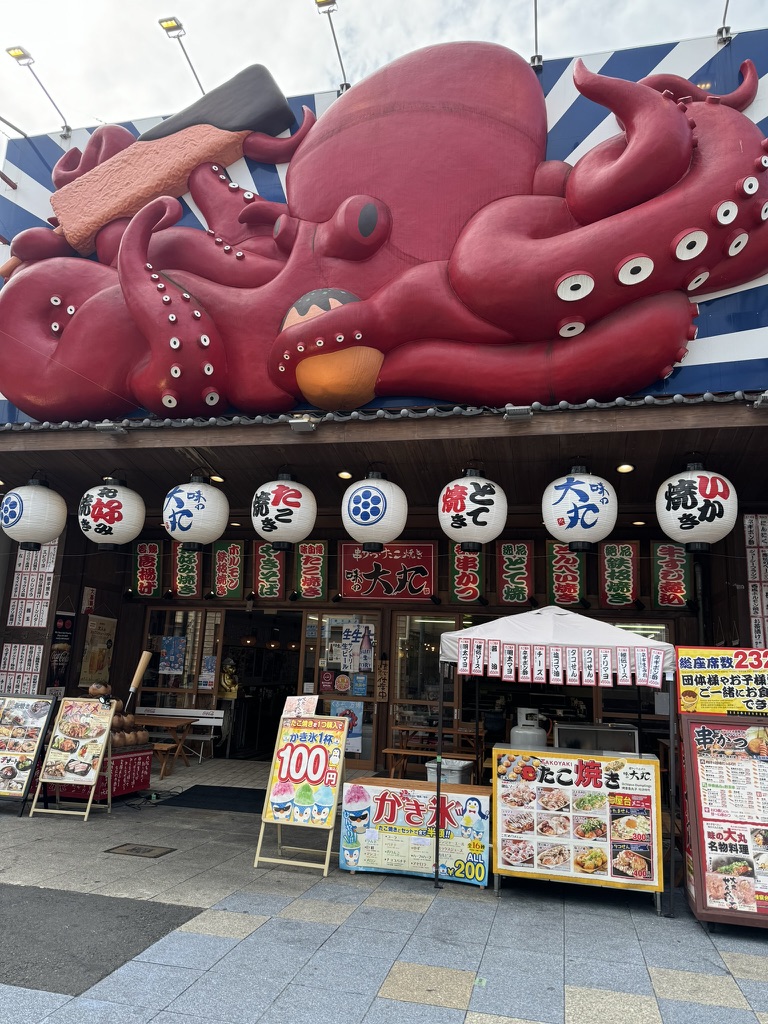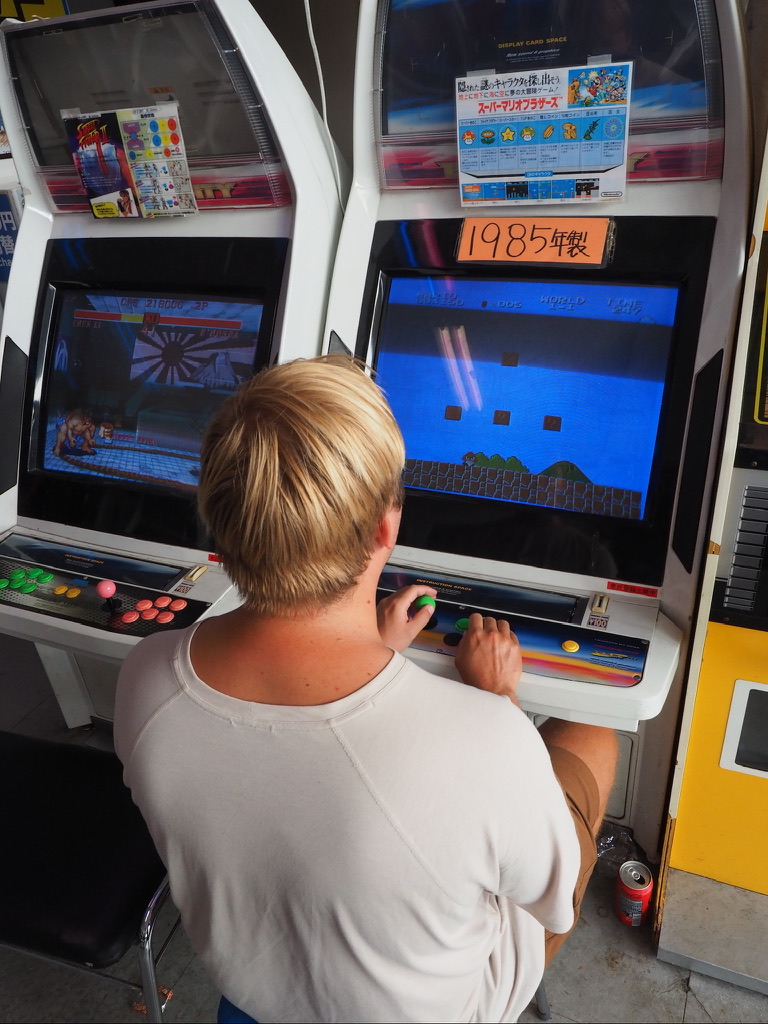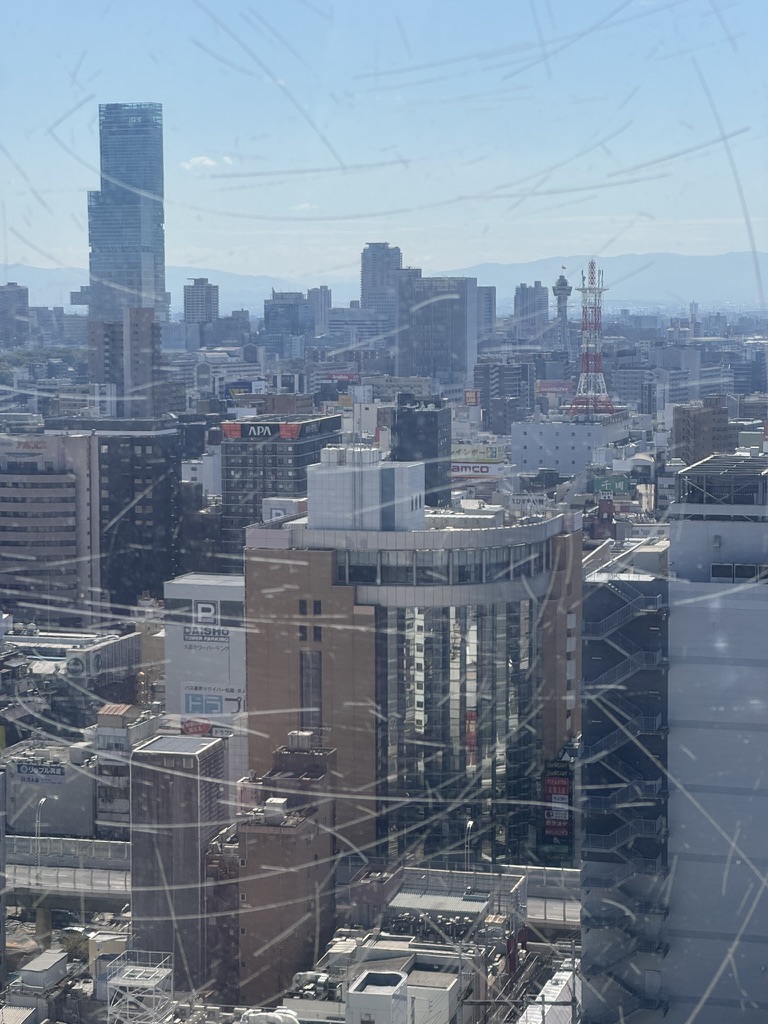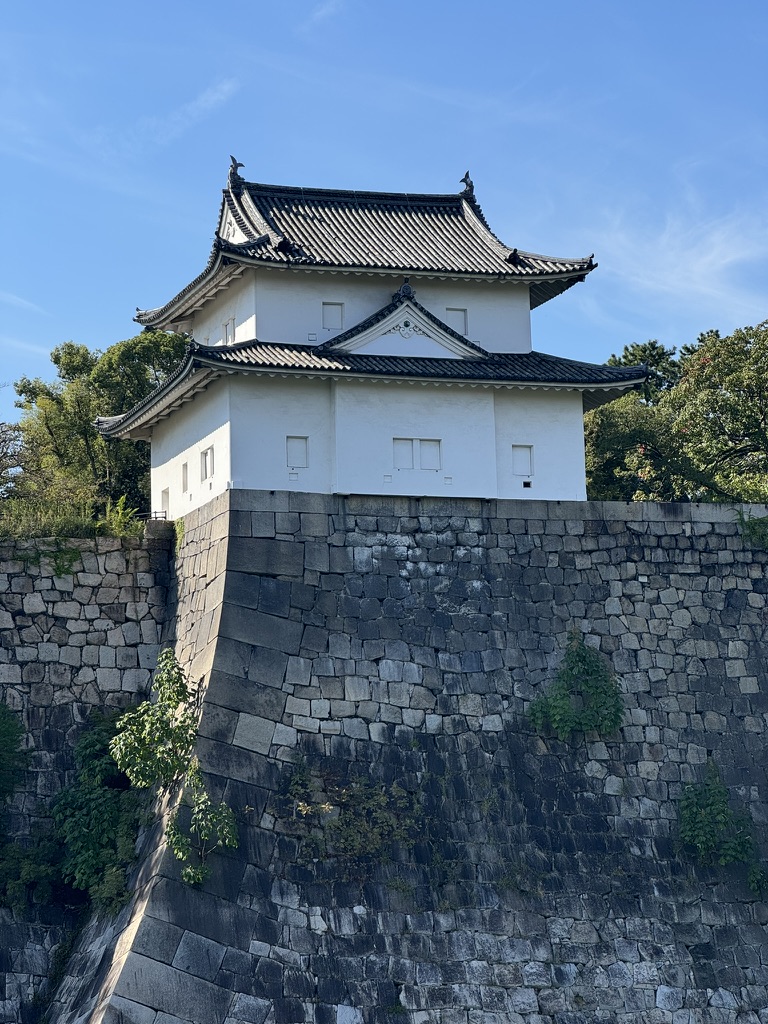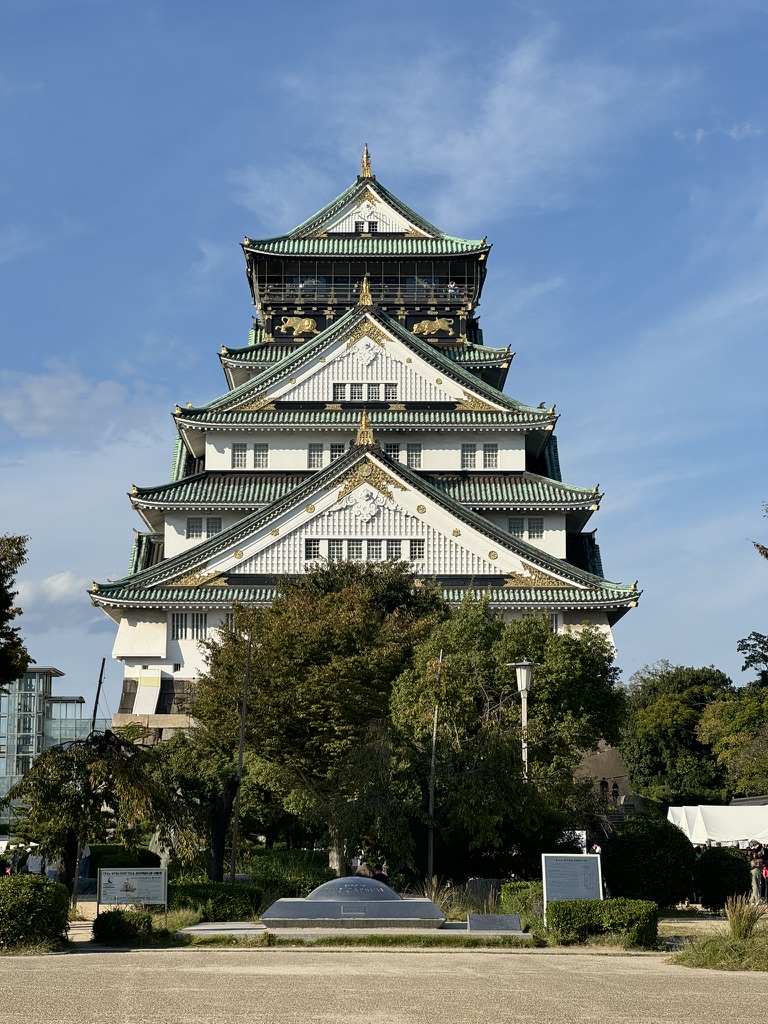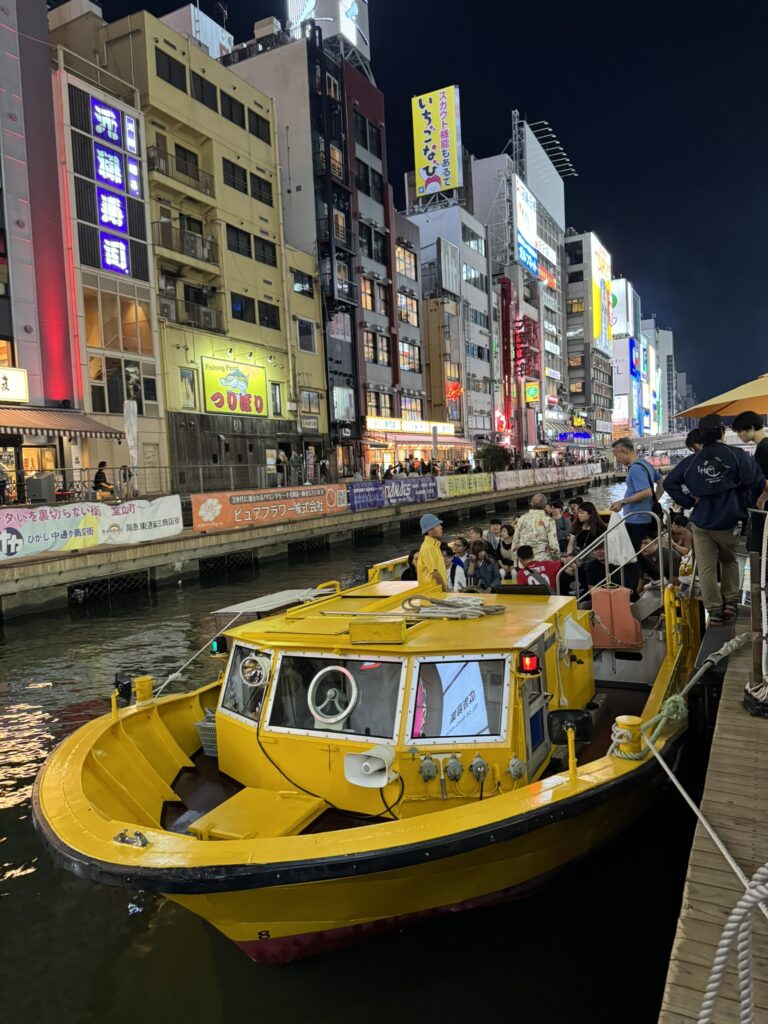Osaka
12 October 2024
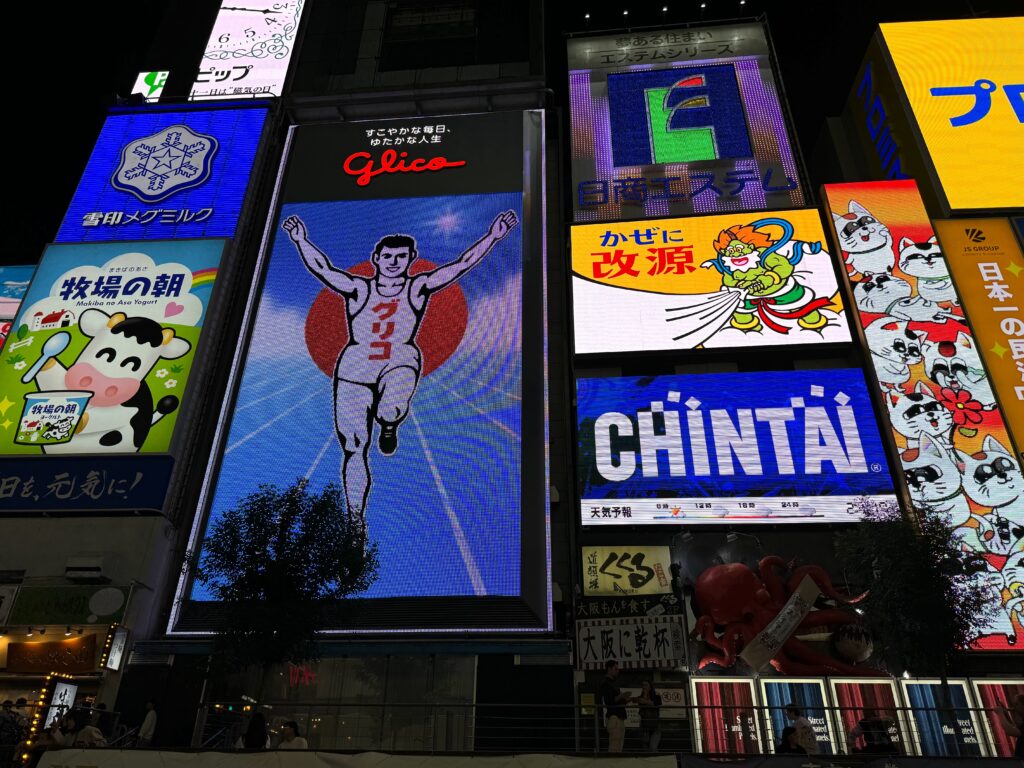
Osaka is Japan’s third-largest city and a major economic and cultural hub in the Kansai region. It’s known for its modern architecture, casual street food, and energetic neighborhoods. The city is home to several popular attractions including Osaka Castle, the lively Dotonbori area with its bright neon signs, and Universal Studios Japan. Public transportation is extensive and easy to use, making it a convenient base for exploring nearby cities like Kyoto, Nara, and Kobe. Osaka is also known for its food, especially local specialties like takoyaki (octopus balls) and okonomiyaki (savory pancakes). While it’s a large urban area, Osaka tends to feel more laid-back and approachable than Tokyo.
Día 1
We arrived in Osaka at 10:10 p.m., knowing full well we had nowhere to stay. The plan was to sleep in the airport—uncomfortable, sure, but free. As soon as we landed, we heard there was a designated rest area and possibly some capsule hotels nearby. Tempted by the promise of something slightly better than tile floors, we left the arrivals terminal in search of those accommodations. Big mistake.
Every single place was full. We checked each hotel, rest area, and capsule pod in and around the airport. Nothing. The floor was cold tile, the few cushioned benches were already occupied, and there weren’t even decent chairs left to sit in for the night. We considered toughing it out, but with no good options, we pulled out our phones and started scanning for any available rooms. Everything was booked. I briefly thought about sleeping in the airport’s prayer room, but Indi thought that would be disrespectful. Personally, I figured any gods watching would probably understand.
I found myself typing things like “Osaka homeless shelter” and “free places to sleep Osaka” into Google. That’s when we stumbled across something unexpected—24-hour internet cafés scattered around the city. Apparently, they offer tiny cubicles originally intended for men to watch DVD porn rentals in private. But because the hourly rates are so cheap, budget travelers sometimes crash there for the night.
We ventured out into the city to look for one with openings. Some of these cafés were clearly adult-focused, with front desks hidden behind blinds so customers could maintain anonymity. Definitely not my first choice for lodging, but I was tired, desperate, and willing to take my chances—though I really could’ve used a blacklight before committing. Unfortunately, every location we checked was already full.
Indi found a blog post about a 24/7 arcade in the city that had a “relaxation area” you could pay extra to access. It sounded promising—or at least open. We made our way there and paid for an overnight stay until 6:00 a.m.
The reality: a brightly lit carpeted space filled with plastic tables, chairs, and a handful of manga-filled bookshelves. Loud music played from overhead speakers. The relaxation area was lined with doors to karaoke rooms, each occasionally blaring alarms to signal time was up. The Wi-Fi didn’t work, and the only power outlet was being used by a tired old massage chair. It was far from ideal, but at that point, it was the best we could do.
Indi had some work paperwork to complete, so I took a break and sat in the massage chair for about ten minutes just to decompress. Next to the relaxation area was a small children’s play zone. I spotted a sign that said it was open to anyone after midnight. It was already past 1 a.m., and the place had started to feel cold.
I headed to the bathroom, changed into pants, put on socks, and grabbed my cardigan. I also snagged some toilet paper, soaked it with alcohol from the dispenser, and used it to wipe down a foam play mat tucked into a corner of the play area. That was going to be my bed.
I laid down a packing cube full of clothes as a pillow, popped in my earplugs, pulled Indi’s buff over my face to block the light, and used my slightly damp towel as a makeshift blanket. Some kids showed up and were running around, laughing, and talking around me. I was freezing cold all night. Somehow, I managed to fall asleep and got about four hours in.
Indi had started out lying next to me but eventually got up, left, came back, and left again. I found out later she couldn’t sleep at all and decided to just stay up and pull an all-nighter wandering the arcade. She sang karaoke by herself, went roller skating, shot bb guns, went bowling, and wandered the huge arcade.
Día 2
- Church
- Tsutenkaku
- Tsutenkaku Hondori Shopping Street
- Camera lense shopping
Indi woke me up at 6:00 am when an arcade employee came by to tell us we needed to leave. All in all, in wasn’t the best night’s sleep I’ve ever had. |
Church
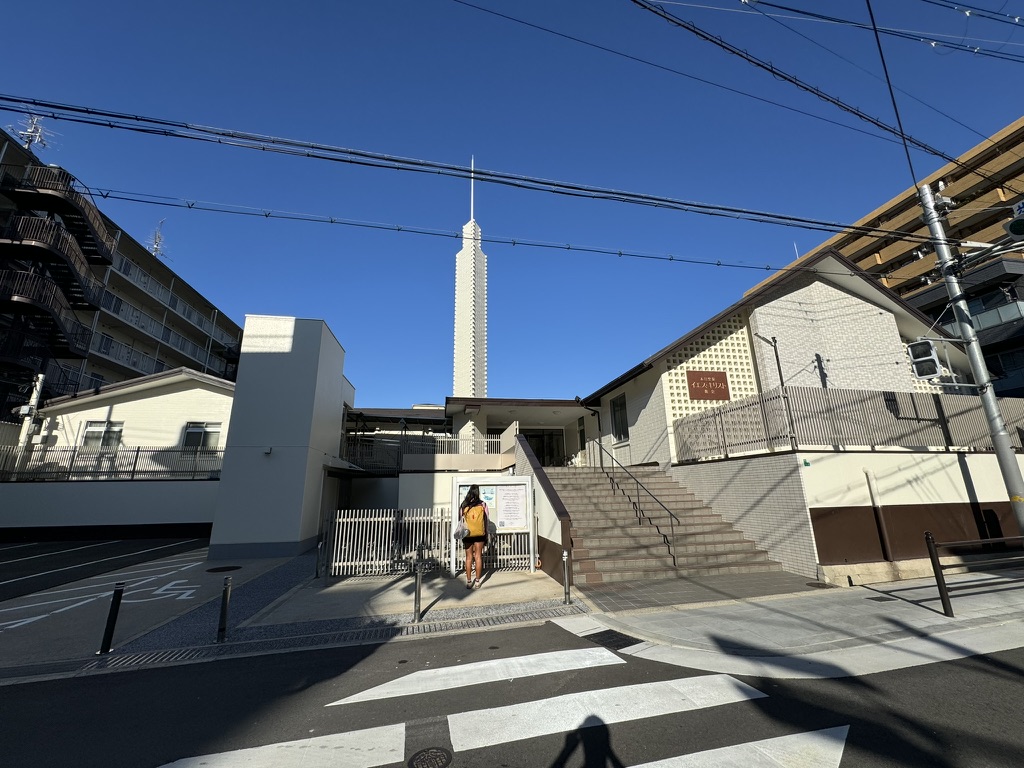
We hadn’t had the chance to go to church much while traveling, so we found one nearby and showed up early. Indi spent the whole meeting sleeping in an empty room, and I chatted with people there who could speak English.
Tsutenkaku Hondori Shopping Street
Tsutenkaku Hondori Shopping Street is a pedestrian street lined with old-school shops, diners, and cheap souvenirs. The vibe is a mix of nostalgia and chaos. A few places were open early, mostly for breakfast or takoyaki.
We stopped at a retro arcade that was busy with gamers. Inside were dusty cabinets with games like Super Mario and Tetris. We played for a while, the buttons sticking a bit but still working. Indi is very good at Tetris so she spent most of her time on that machine while I played Mario.
We wandered through a multi-level mall hunting for secondhand camera shops. Indi was on a mission—she wanted a smaller prime lens that would be more practical for travel. The zoom lens she had was too bulky for quick shots on the go, especially when we’re walking all day or squeezing gear into a small bag. She found a great lens at a fair price and she picked it up.
Tsutenkaku
We made it to Tsutenkaku Tower after walking through the shopping street. The area around the base was packed with people taking photos, hanging out, or lining up to go inside. We weren’t really interested in going up, especially after seeing the long line wrapping around the entrance, so we decided to just walk the perimeter and take it in from the outside.
Día 3
- Don Quijote
- Osaka Castle
- Dotonbori Canal
Don Quijote
We strolled along the canal in Dotonbori and finally stumbled upon the massive Don Quijote with the odd Ferris wheel attached to the side. It’s the only oblong Ferris wheel in the world. It may be more gimmicky than anything, but it’s a must-do for Osaka travelers as far as I can tell.
If you’ve never been in Don Quijote, it’s basically a cheap Japanese product/souvenir shop. It has all kinds of things in it and they’re often huge.
Osaka Castle
We visited Osaka Castle and the exterior was absolutely stunning. The castle’s stone walls were particularly impressive, towering over the grounds and giving the whole area a grand, historical feel. The design of the building itself was beautiful, with its distinct white walls and green-tiled roof standing out against the city skyline.
Inside, the castle is home to a museum that dives into the history of the castle and its role in Japan’s past. We spent a lot of time exploring the exhibits, learning about the different periods of Japanese history and how Osaka Castle fit into it all. The museum was well-curated, with interesting artifacts and displays that kept us engaged throughout our visit.
By the end of our time there, my feet were aching from all the walking, but it was definitely worth it. The combination of the stunning exterior and the fascinating museum inside made Osaka Castle a highlight of our trip.
Dotonbori Canal
The night boat ride along the canal near Dotonbori is one of those low-key experiences that gives you a different view of the area. The canal runs right through the heart of Osaka, so you’re floating alongside the same neon lights and busy streets you’d normally walk through. But from the boat, it’s a lot quieter, and you get a good look at the iconic Glico sign and other colorful billboards lighting up the night.
The ride itself isn’t too long—about 20 to 30 minutes—but it’s a nice break from the constant hustle and bustle of Dotonbori. Depending on the tour, you can go solo or share the boat with others, and some tours will offer a bit of info about the canal as you go. It’s one of those things where, even though you’re still in the middle of the action, you get a chance to sit back, relax, and see things from a different angle.

We decided to try some Kobe beef because we were so close to Kobe. We were given a platter with four different cuts of beef, and a charcoal grill sat between us on the table. This was an occasion when I wasn’t keen to cook my own meat because I was afraid of overcooking it. From the get-go, I was convinced we were in a bit of a tourist trap, and looking back, I think that was the case. The beef wasn’t bad, but I think we overpaid for what it was.
Next time
On our next adventure, we have our craziest travel experience finding a place to sleep in Osaka.


